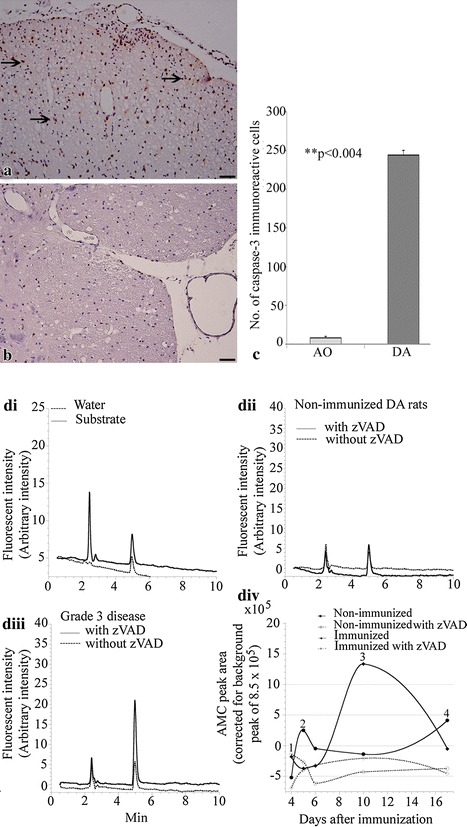Figure 3.

Spinal cord caspase activity in immunized and non-immunized DA rats. A representative micrograph of sections of the spinal cord from diseased DA rats (a grade 3.5; n = 4) and immunized but resistant AO (b) rats (n = 4) immunostained with polyclonal rabbit anti-caspase-3. Caspase-3 positive cells (arrows) were observed only in DA rats. c A graph of the number of caspase-3 immunoreactive cells in sections of spinal cords. Spinal cord specimens were also incubated in oxygenated KH buffer plus Ac-DEVD-AMC with and without zVAD-fmk. The tissues were then disrupted by homogenization and the supernatants were separated on HPLC and analyzed for AMC peak. di depicts representative runs of dH2O and substrate injections, dii runs of spinal cord tissue caspase activity of non-immunized DA rat and diii representative runs of spinal cord tissue caspase activity of immunized DA rat at the peak of clinical disease. div AMC peak areas were plotted as a function of days after immunization in DA rats. A peak, indicative of caspase activity is significant only in DA rats at the peak of clinical disease. This is further confirmed in graphs of AMC peak areas as a function of days after immunization (complete lines). Note how caspase activity rises from induction (1), grade 2 disease (2), till peak of clinical disease (3) and recovers (4) to levels similar to that of (1) after recovery. This is not observed in resistant AO rats (dotted lines). Bar 25 μm.
